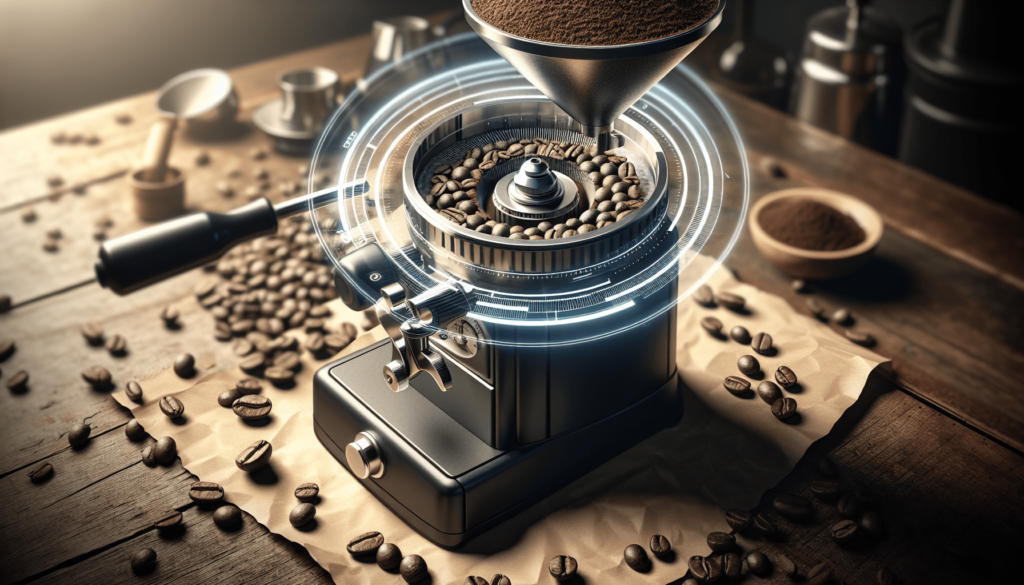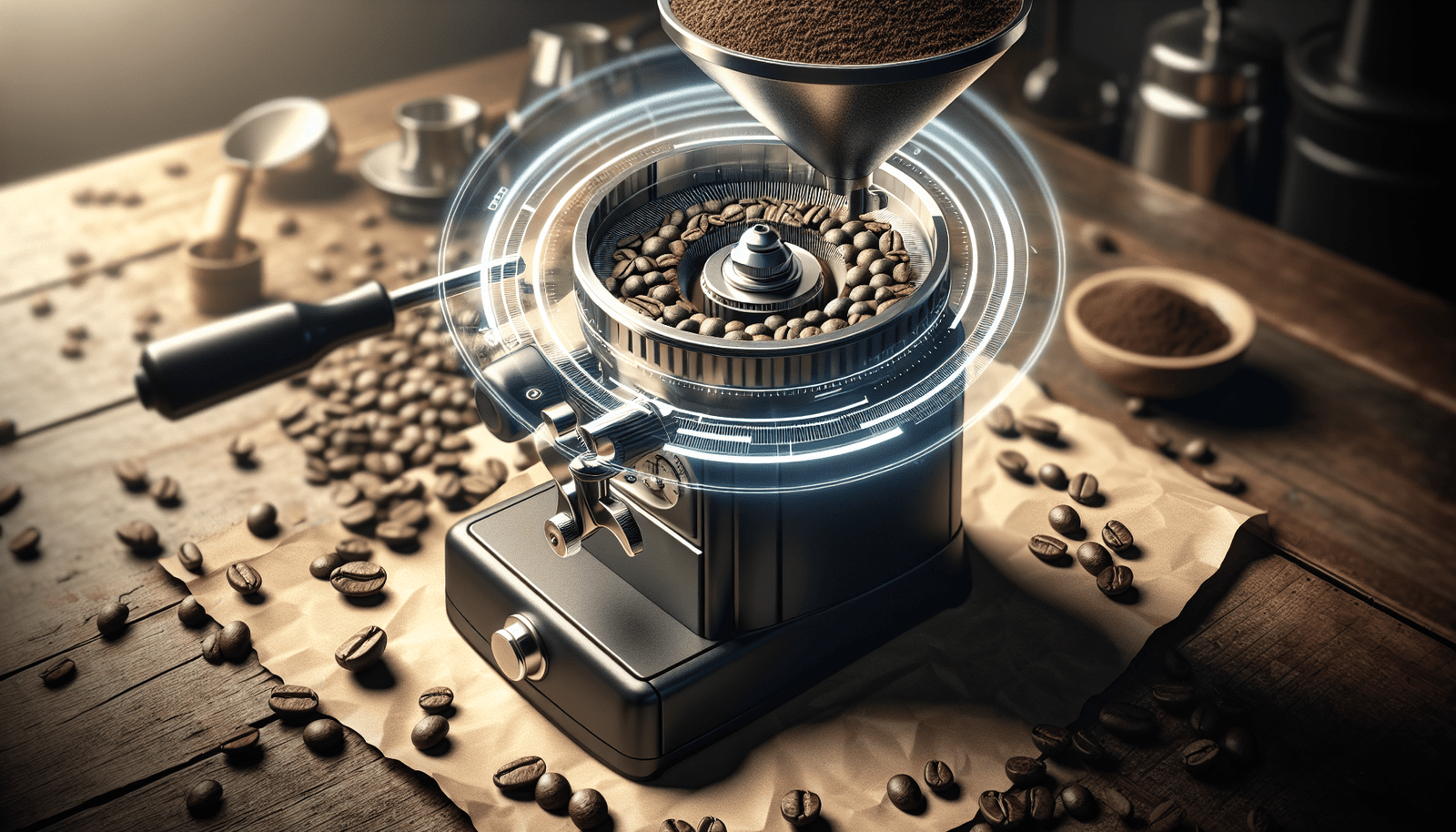If you’re someone who takes their espresso seriously, then achieving a consistently perfect cup of coffee is likely a top priority for you. One key element in the pursuit of this perfection is properly calibrating your espresso grinder. By ensuring that your grinder is set up correctly, you can achieve a consistent extraction every time, resulting in a delicious and balanced espresso shot. In this article, we will guide you through the process of calibrating your espresso grinder, helping you unlock the full potential of your coffee beans and elevate your espresso experience.

Understanding the Importance of Calibration
Calibration is a critical process in ensuring the consistency and quality of your espresso extractions. It involves adjusting various variables, such as grind size, dose, and extraction time, to achieve the desired flavor profile. Proper calibration not only enhances the taste of your espresso but also ensures that each shot is consistently delicious. By paying attention to the calibration of your espresso grinder, you can achieve a more precise and predictable extraction.
Why Calibration is Necessary
Calibration is necessary because even the slightest variation in variables can significantly affect the taste and quality of your espresso. Inconsistent grind size, for example, can lead to over or under extraction, resulting in an imbalanced flavor. Similarly, an incorrect dose can affect the strength of your espresso, leading to a weak or overpowering taste. Calibration helps to eliminate these inconsistencies by fine-tuning the variables to achieve optimal extraction.
The Impact of Calibration on Extraction
Calibration plays a crucial role in the extraction process. Grind size, for instance, dictates the surface area of the coffee particles exposed to water. If the grind size is too fine, the water may struggle to pass through, leading to over-extraction. On the other hand, if the grind size is too coarse, the water may flow too quickly, resulting in an under-extracted shot. By calibrating the grind size, you can control the extraction time and achieve a balanced and flavorful espresso.
Gathering the Necessary Tools
Before diving into the calibration process, make sure you have the necessary tools at hand. While some may be specific to espresso preparation, others are more commonly found in any coffee enthusiast’s toolkit. Here are the tools you will need for calibration:
Espresso Grinder
Invest in a quality espresso grinder that allows for precise adjustments. The grinder should have a wide range of grind size settings to cater to various coffee beans and extraction preferences. A burr grinder is highly recommended for its consistency in particle size.
Weighing Scale
A reliable digital weighing scale is essential for accurately measuring the coffee dose. Consistency in dose is crucial for achieving consistent extractions.
Timer
A timer, whether built-in to your espresso machine or an external one, is necessary to monitor the extraction time. Controlling the extraction time is vital to ensuring proper extraction and avoiding over or under-extraction.
Cleaning and Maintenance
To ensure accurate and consistent calibration, regular cleaning and maintenance of your espresso grinder are necessary. Neglected maintenance can introduce variables that may affect the calibration process and the flavor of your espresso. Here are two critical cleaning and maintenance tasks:
Removing Coffee Residue
After each use, clean out any coffee residue left in the grinder. This prevents residue build-up, which can affect the taste of subsequent shots. Use a brush or a vacuum cleaner specifically designed for coffee grinders to remove all coffee particles.
Checking Burrs for Wear or Damage
Inspect the burrs of your grinder regularly for signs of wear or damage. Worn-out or damaged burrs can affect the consistency of the grind size, leading to inconsistent extractions. If you notice any issues, it may be necessary to replace the burrs to maintain optimal calibration.
Setting the Grind Size
Grind size is a critical variable that significantly influences the extraction process. Calibrating the grind size allows you to control the extraction time and, consequently, the flavor of your espresso.
Determining the Optimal Grind Size
Start by setting your grinder to a medium grind size as a baseline. Pull a shot and taste it. If the shot is over-extracted, meaning it tastes bitter and dry, the grind size is too fine. Conversely, if the shot is under-extracted, meaning it tastes sour and weak, the grind size is too coarse. Adjust the grind size accordingly, making it coarser for a shorter extraction time or finer for a longer extraction.
Making Small Adjustments
Once you have determined the optimal grind size, make small adjustments as needed to fine-tune the extraction. Gradually tweak the grind size, pulling shots and tasting them each time, until you achieve the desired flavor profile. Remember to record the changes you make for future reference.

Adjusting the Dose
The dose, or the amount of coffee used per shot, is another crucial variable that can be calibrated to achieve consistent extractions and flavor.
Evaluating the Ideal Dose
Start by using a standard dose recommended by your coffee beans’ roaster or manufacturer. Pull a shot and evaluate its taste and strength. If the shot is too weak, increase the dose slightly. If it is too strong or overpowering, decrease the dose. Continue adjusting the dose and tasting the shots until you achieve the desired flavor balance.
Using a Dosing Funnel
A dosing funnel can help ensure a consistent dose by preventing coffee grounds from spilling or dispersing unevenly. It allows for a precise distribution of coffee into the portafilter, leading to more consistent extractions. Invest in a quality dosing funnel that fits your portafilter size.
Dialing in the Extraction Time
Controlling the extraction time is crucial for achieving consistent and balanced flavors in your espresso. Calibration of the extraction time allows you to customize your shots to suit your preferences.
Understanding the Importance of Extraction Time
Extraction time refers to the duration it takes for water to pass through the coffee grounds during the brewing process. It directly influences the flavor profile by determining how much of the coffee’s soluble compounds are extracted. An under-extracted shot will result in a sour and weak taste, while an over-extracted shot will be bitter and dry.
Controlling Flow Rate
To adjust the extraction time, focus on controlling the flow rate of the water passing through the coffee grounds. This can be done by adjusting the grind size and the tamper pressure. A finer grind size and increased tamp pressure will slow down the flow, leading to a longer extraction time. Conversely, a coarser grind size and decreased tamp pressure will speed up the flow, resulting in a shorter extraction time. Experiment with different settings until you find the ideal extraction time for your preferred flavor.
Measuring the Yields
Yield refers to the amount of liquid espresso extracted from a dose of coffee. Measuring yields helps determine the strength and body of your espresso and can be used to further refine your calibration.
Determining the Optimal Yield
Start by measuring the amount of liquid espresso extracted from your dose. A highly concentrated shot with a small yield will be stronger, while a larger yield will result in a more diluted shot. Taste the shots and evaluate your preference. Adjust the grind size if necessary to achieve the desired yield and flavor balance.
Adjusting Grind Size based on Yield
If you consistently achieve the desired yield but find the flavor profile lacking, you can consider making small adjustments to the grind size. Finer grind size can enhance extraction and concentration, while a coarser grind may help tame the flavor. Experiment with different grind sizes while keeping the yield constant, and evaluate the taste to find the perfect balance.
Testing and Tasting
Testing and tasting the shots throughout the calibration process are crucial to achieving the desired flavor profile. The flavor profile of an espresso is subjective and varies from person to person, so it is essential to trust your taste buds.
Evaluating the Flavor Profile
When tasting the shots, pay attention to the balance of acidity, sweetness, and bitterness. Consider the body and mouthfeel of the espresso as well. It can be helpful to take notes and compare the shots to track changes and improvements.
Making Further Adjustments
Based on your tasting evaluations, make further adjustments to the grind size, dose, extraction time, or yield as necessary. Remember that small changes can have a significant impact on the flavor profile. Continue tasting the shots and refining your calibration until you achieve the desired flavor profile consistency.
Consistency and Record-Keeping
Consistency is key in delivering delicious espresso consistently. To maintain consistency, it is crucial to develop a system of record-keeping and follow a standard process for each calibration.
Maintaining Consistency
Adopt a consistent routine and methodology for each calibration session. Keep your tools clean and properly maintained, ensure the same brewing temperature, and follow the same steps each time. Consistency in your approach will help minimize variables and achieve predictable extractions.
Note-Taking and Logging Adjustments
Record all the adjustments you make during the calibration process, along with the resulting flavor profiles of each shot. This log will serve as a valuable reference for future calibrations and troubleshooting. Over time, you will develop a better understanding of your grinder’s performance and your own preferences.
Regular Re-calibration
Just as regular maintenance is crucial, so is regular re-calibration of your espresso grinder. Changes in ambient temperature, humidity, or even the coffee beans you use may require adjustments to achieve consistent extractions.
Monitoring Changes
Pay attention to any changes in your espresso’s taste, such as increased bitterness or unbalanced flavors. These changes may indicate the need for re-calibration. Additionally, changes in the grinder’s performance, such as inconsistencies in the grind size or extraction time, should prompt a re-calibration.
Establishing a Re-calibration Schedule
While the frequency of re-calibration depends on various factors, it is generally recommended to re-calibrate your espresso grinder every few weeks or when you change coffee beans. Establishing a re-calibration schedule ensures that you maintain consistent extractions and flavor profiles over time.
By understanding the importance of calibration, gathering the necessary tools, following proper cleaning and maintenance, setting the grind size and dose, dialing in the extraction time, measuring the yields, testing and tasting, maintaining consistency, and establishing a re-calibration schedule, you can properly calibrate your espresso grinder for consistent extraction. Enjoy the journey of experimentation and refinement as you discover the perfect cup of espresso tailored to your taste preferences.

